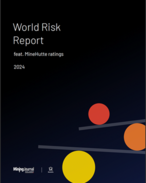This article is 10 years old. Images might not display.
EY today released its report Mergers, acquisitions and capital raising in mining and metals, 2014 trends, 2015 outlook. Buy, build or return?, which slowed declines in global and Australian deals.
Deal volume in the Australian space dropped for the fourth consecutive year to 144 deals, down from 178 in 2013 and the lowest since 2003.
Deal value also fell to a 10-year low of $US4.7 billion ($A6 billion), down from $5.5 billion in 2013 and the lowest since 2004.
Global deals also hit 10-year lows in 2014, with 544 deals at a value of $44.6 billion completed.
But Australia had the highest volume of initial public offerings in 2014, with seven listings raising $76 million.
EY Australia and Asia Pacific mining and metals transactions leader Paul Murphy said it was a tough market, but the bottom of the cycle was often when long-term value was created.
He said deal activity in 2015 would be driven by divestments, fire sales and an expected rise in the pace of private capital investment.
“Standing still is not an option for the sector. We expect to see mining companies continuing to review their portfolios and capital allocation with regard to growth options,” Murphy said.
“As the sector enters the latter stages of a global supply rebalancing and new mining industry participants jockey to stake their position, companies are juggling shorter term financial performance with longer term value drivers to take the necessary capital decisions to optimise value creation.”
EY noted the large amount of private equity funding yet to be deployed and said 2015 could be a turning point.
“On the whole, sector-focused funds have patiently and conscientiously refrained from making significant investments in 2014, and this has proven to be the right strategy, given where share prices across the sector ended the year,” said Murphy.
“Along with depressed equity valuations, the pipeline of quality assets expected to enter the market as a result of portfolio reviews sets the scene for significant industry restructuring and the emergence of some new players to drive competitive growth.”
EY also expects a rise in strategic partnerships and interest from Asian investors.
“There could also be a flurry of opportunistic buying as companies fall under the weight of widespread price volatility,” Murphy said.
Global capital raisings in 2015 dropped 15% to $230.8 billion, though most funds raised went into refinancing.
“Capital availability has become very selective and getting projects away requires increasingly sophisticated and innovative funding structures and sources,” Murphy said.
“Some of the more innovative project finance stories in 2014 came from mid-tier and advanced developers, including the $7.2 billion funding package for Roy Hill iron ore project in the Pilbara, the year’s largest project finance deal.”
EY looked at the capital allocation trends of 30 global majors between 2003 and 2013, which showed a clear underperformance by company which primarily invested in a “build” strategy over the period, while returners outperformed, followed by acquirers.
“Acquisition options have often been taken off the table because of the significant impairments that have followed deals in recent years, and the stigma attached as a result,” Murphy said.
“This overlooks the huge returns that some acquisitions created earlier in the cycle, and the short payback that a deal, if executed well, may generate overall compared to investing in a portfolio asset.
“Given the sector is now back to the lowly M&A levels of 10 years ago, the question is when to move, as the rule of thumb tells us that the early movers will create the most value.”
But Murphy expects conditions for advanced juniors and single-project developers to remain tough.
“As a result, this part of the sector is stuck between a rock and a hard place – poorly considering financing strategies can be value destructive, but with no finance there will inevitably be growth stagnation,” he said.
Murphy said many juniors which had suspended exploration and development activities to conserve cash would simply continue in “survival” mode.
“However, the lack of risk capital for junior explorers is having a significant impact on available funds for exploration, potentially setting up supply shortages for the next decade.”























